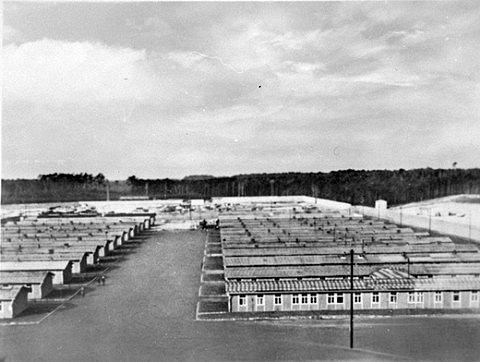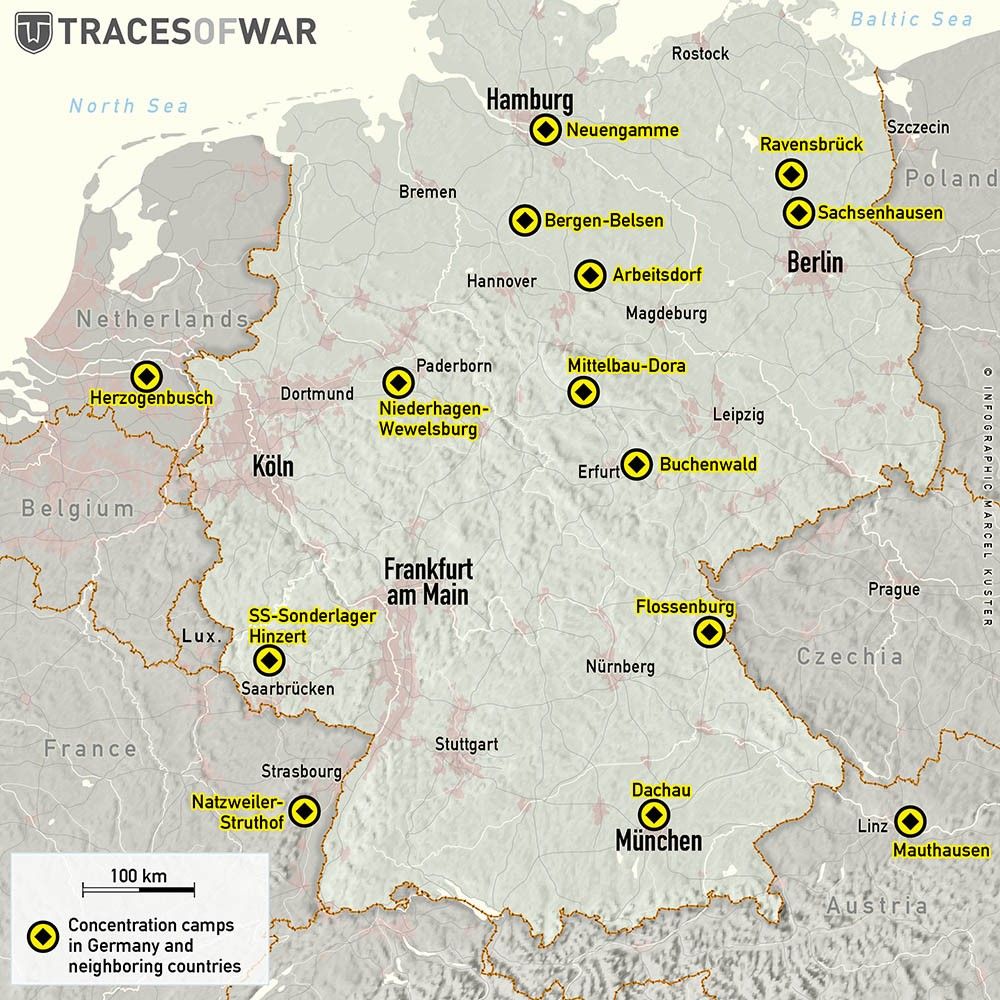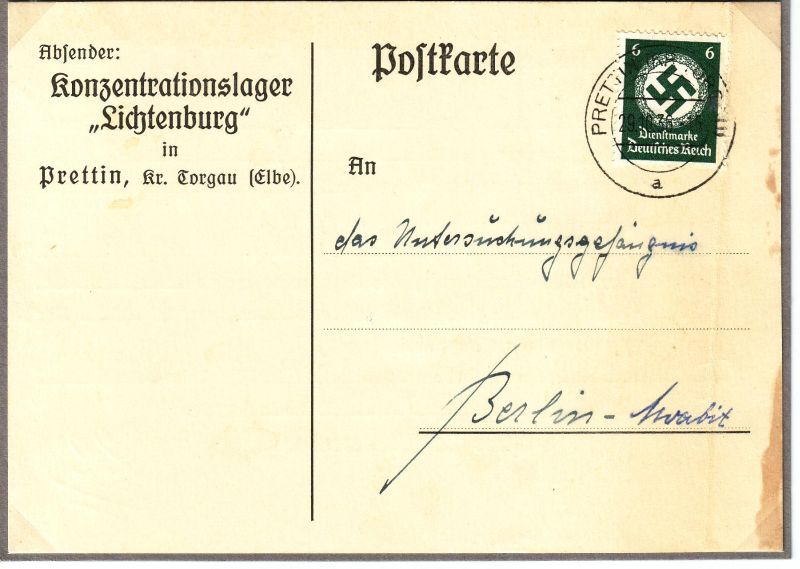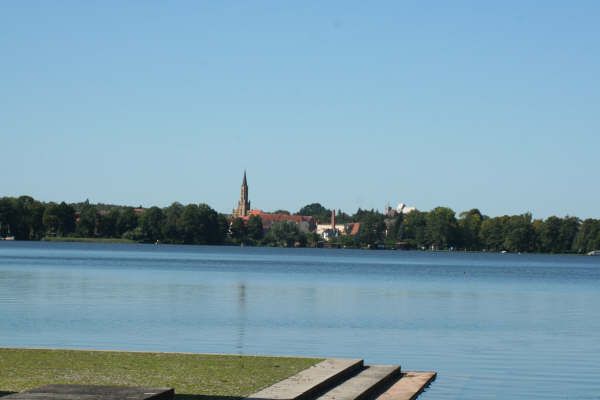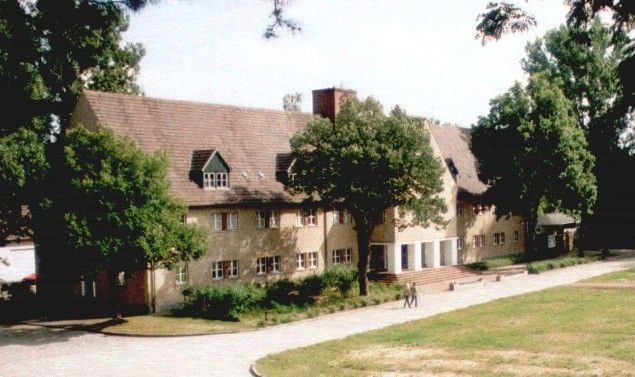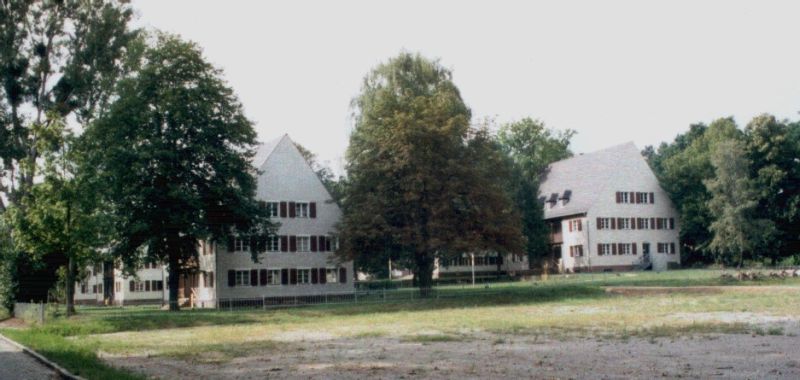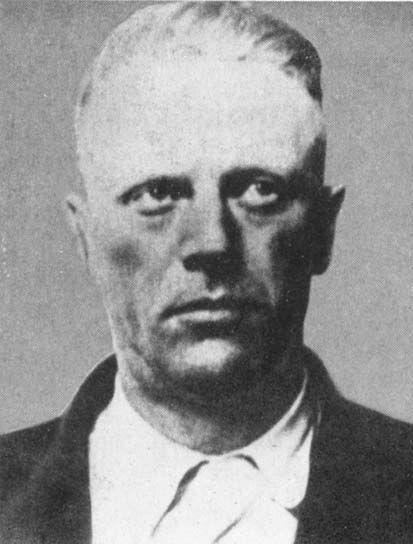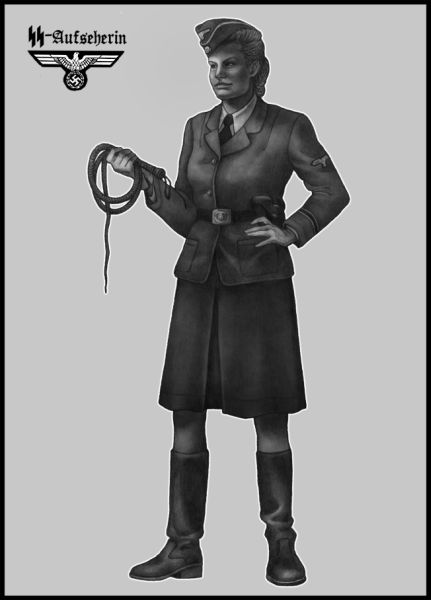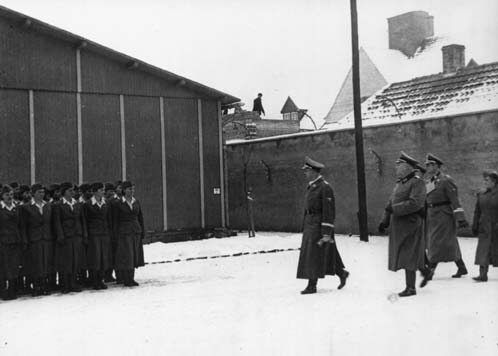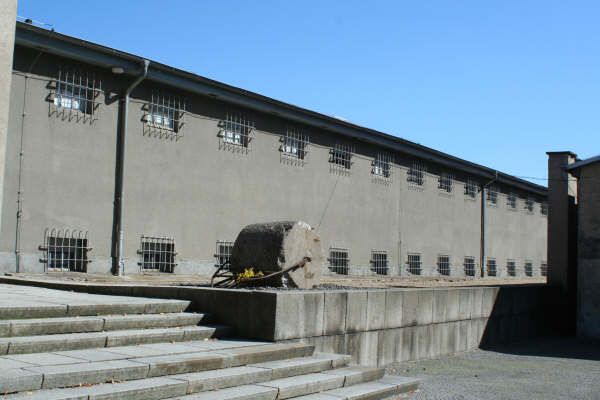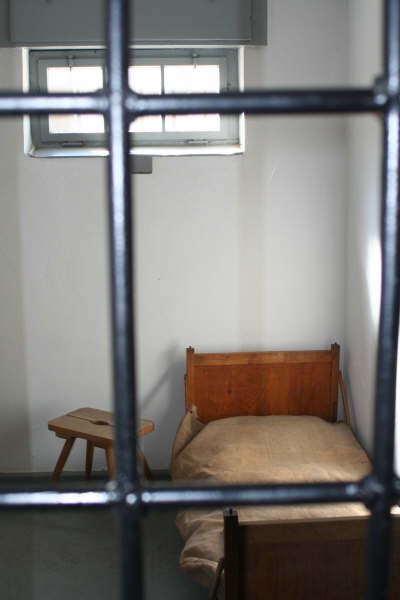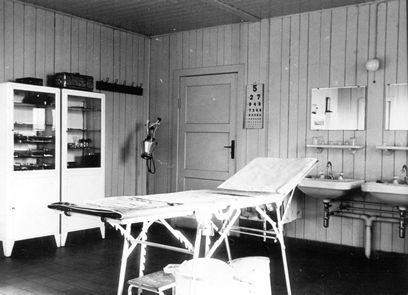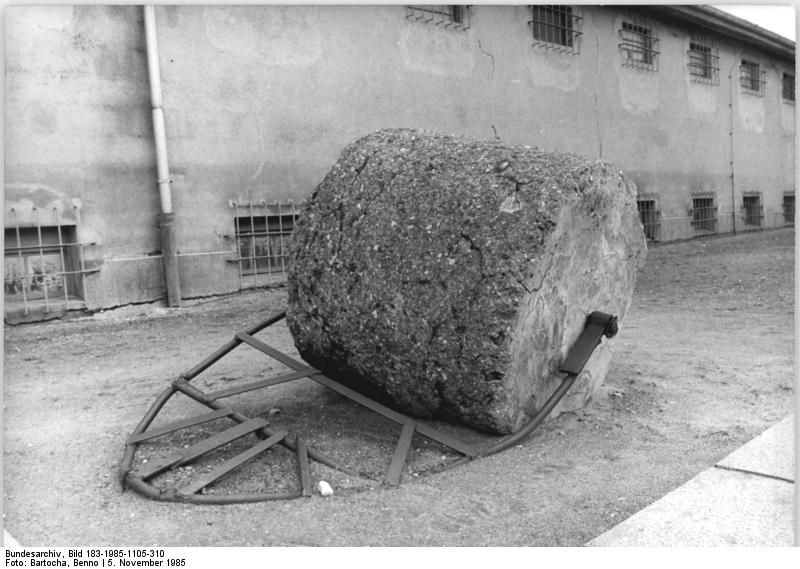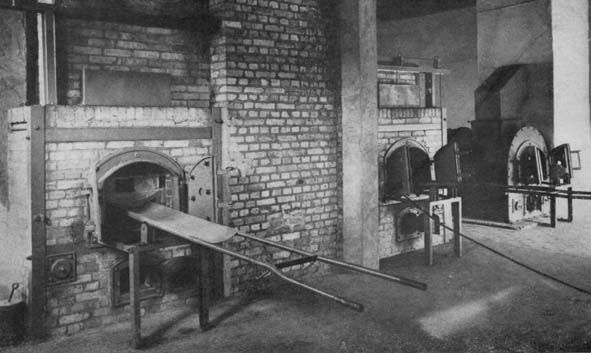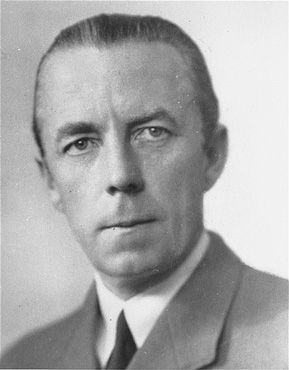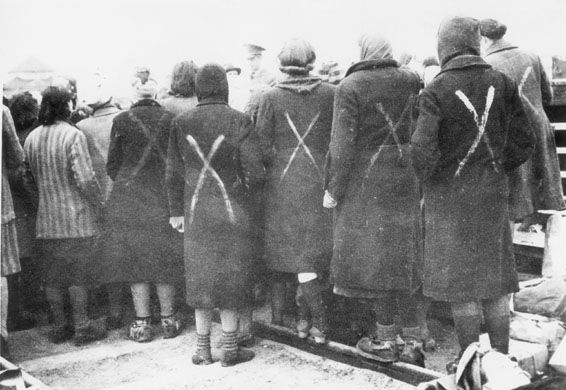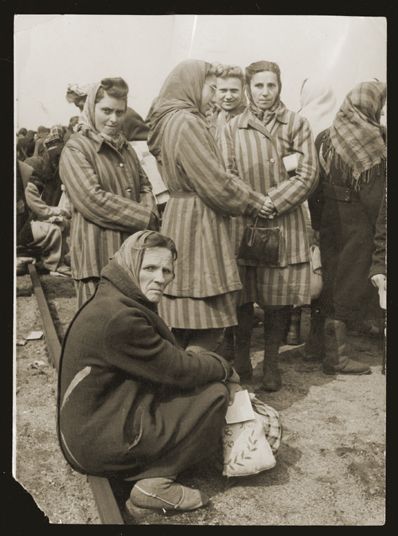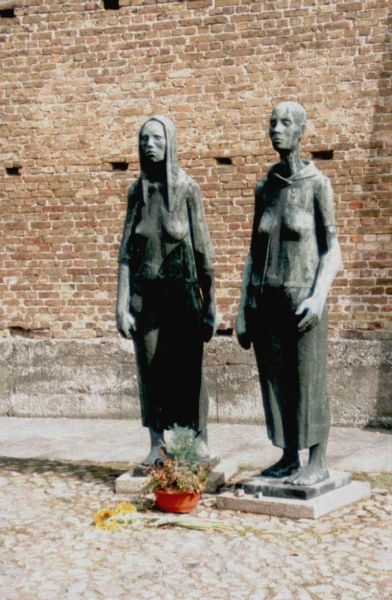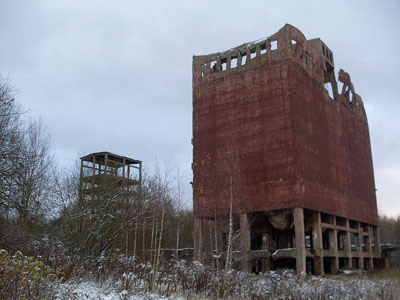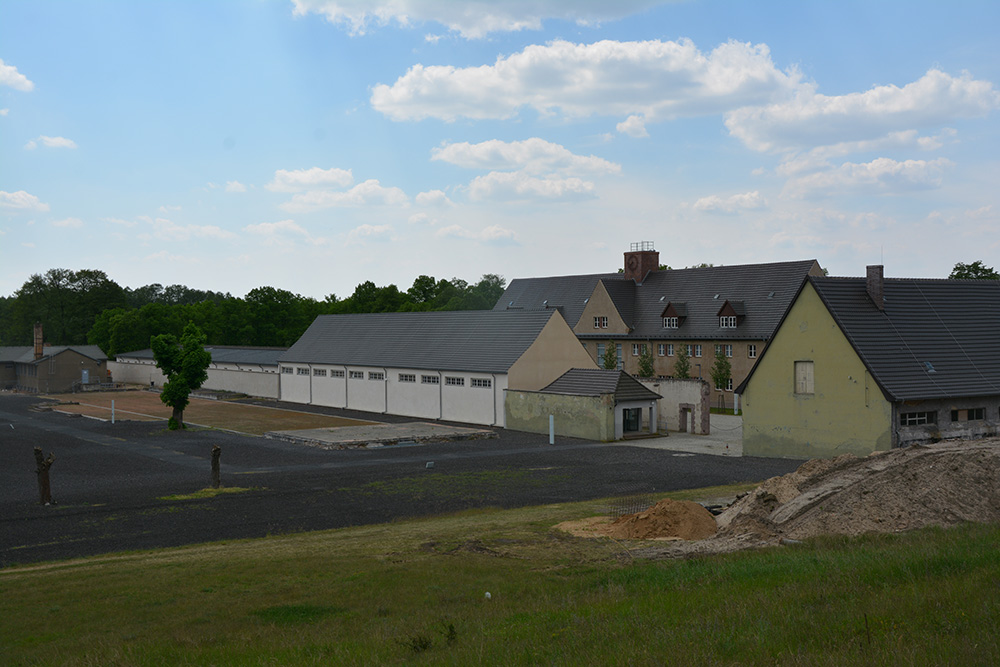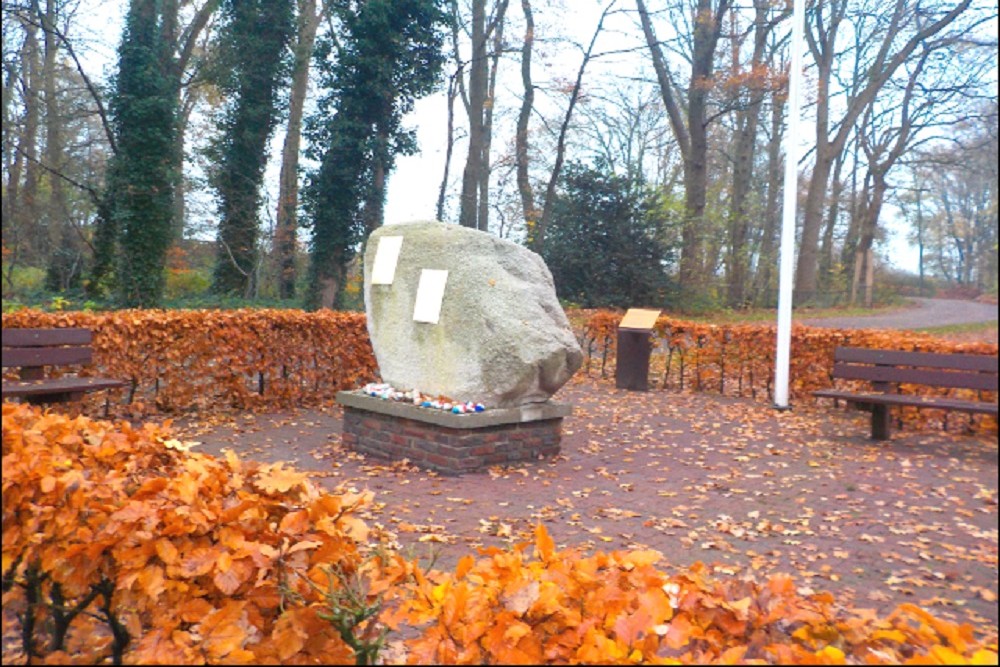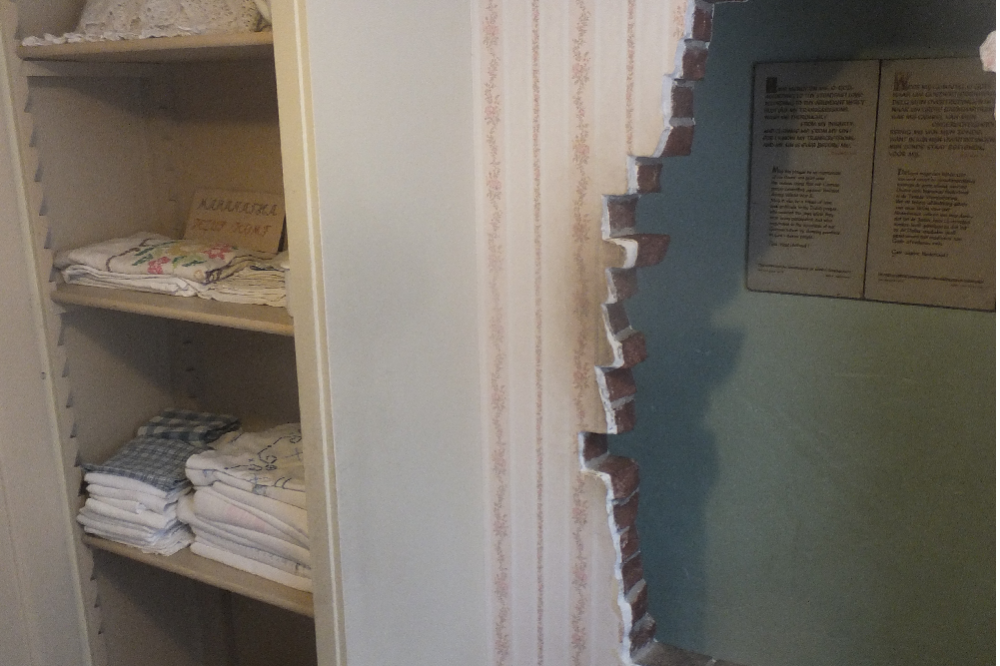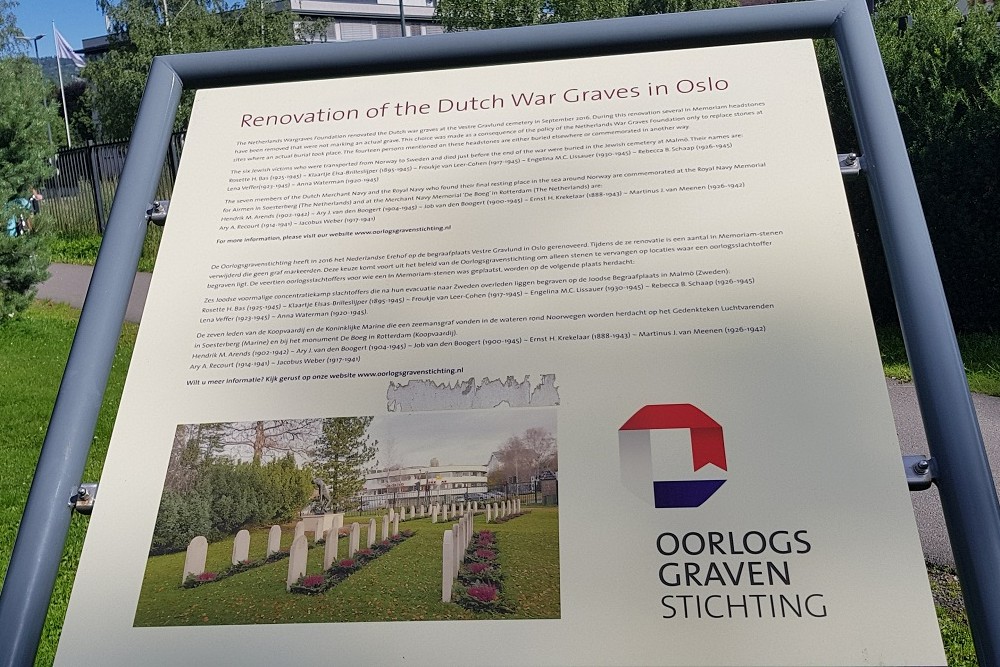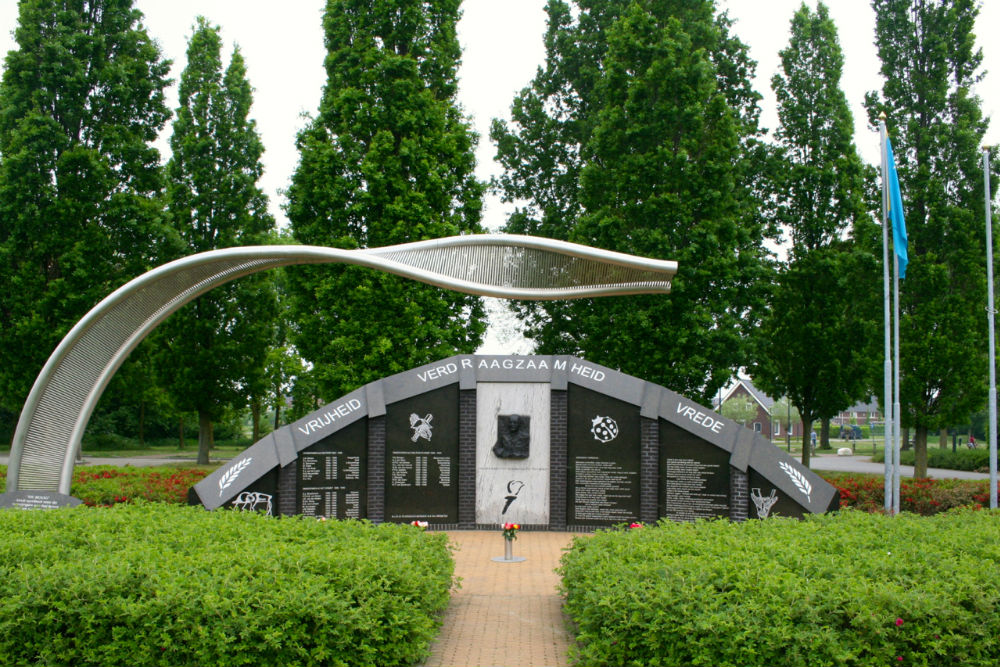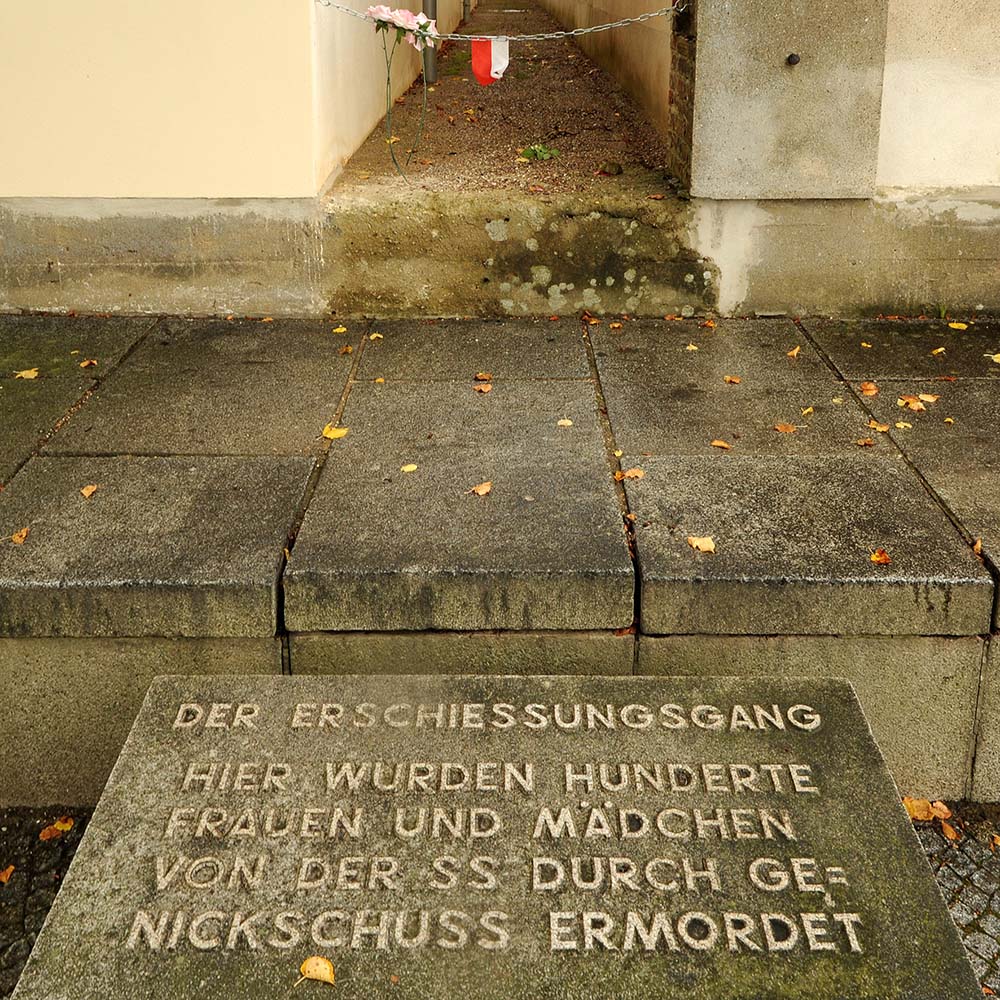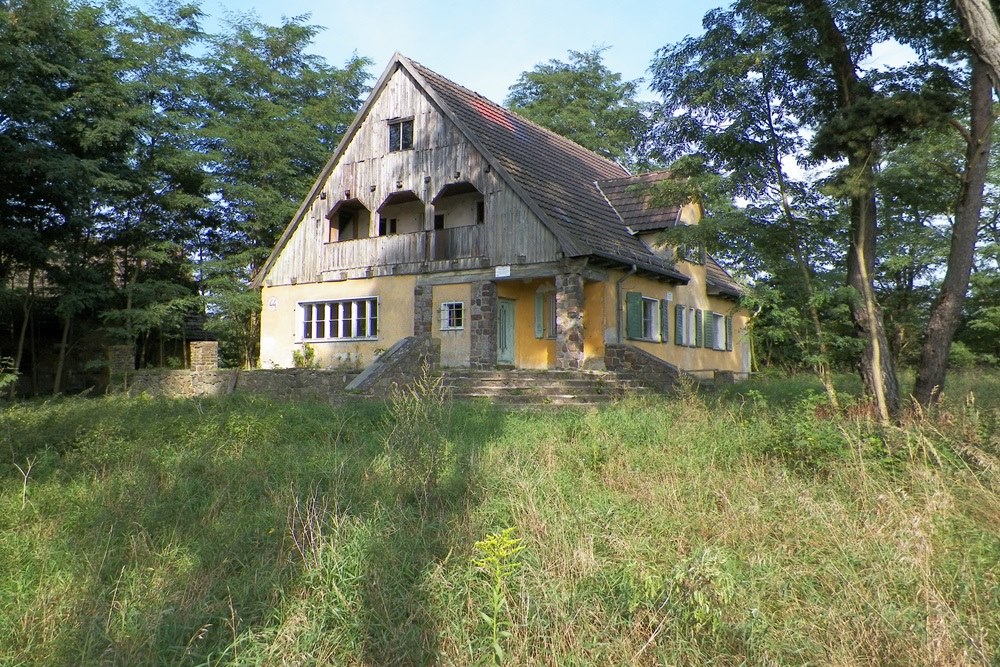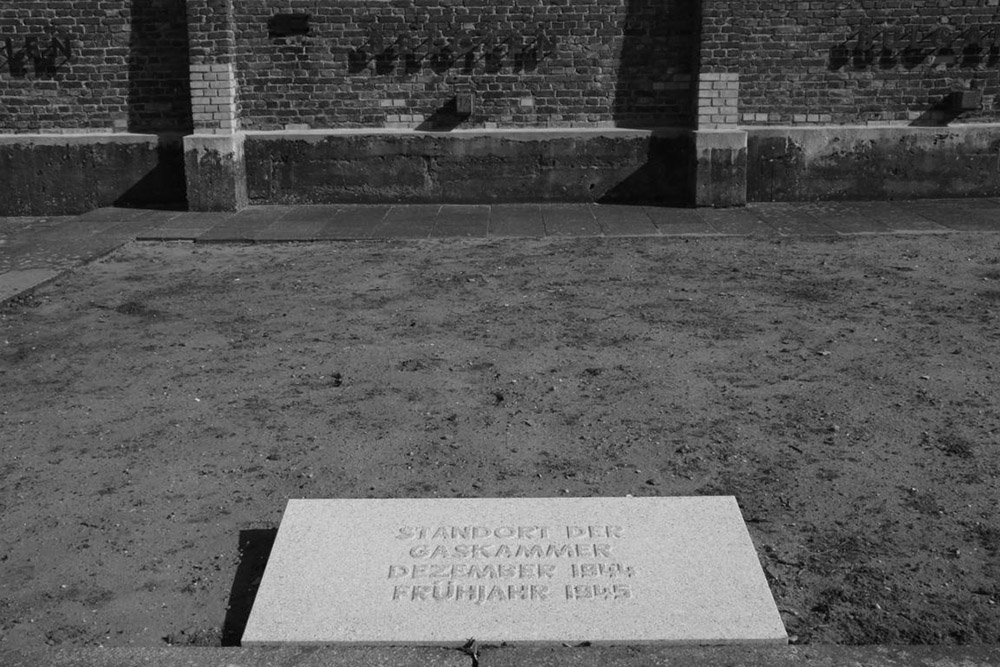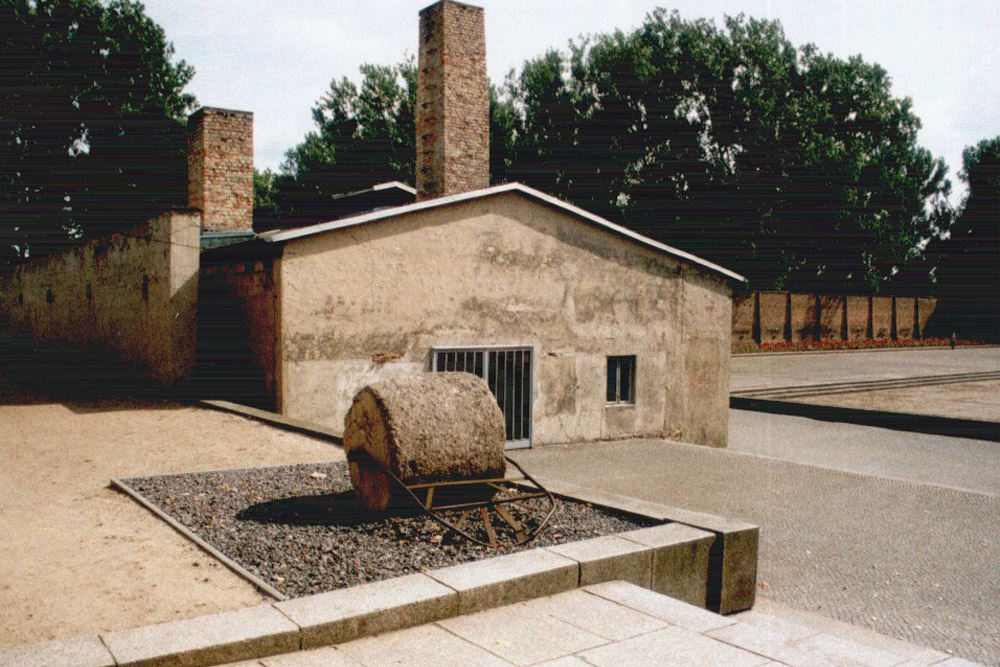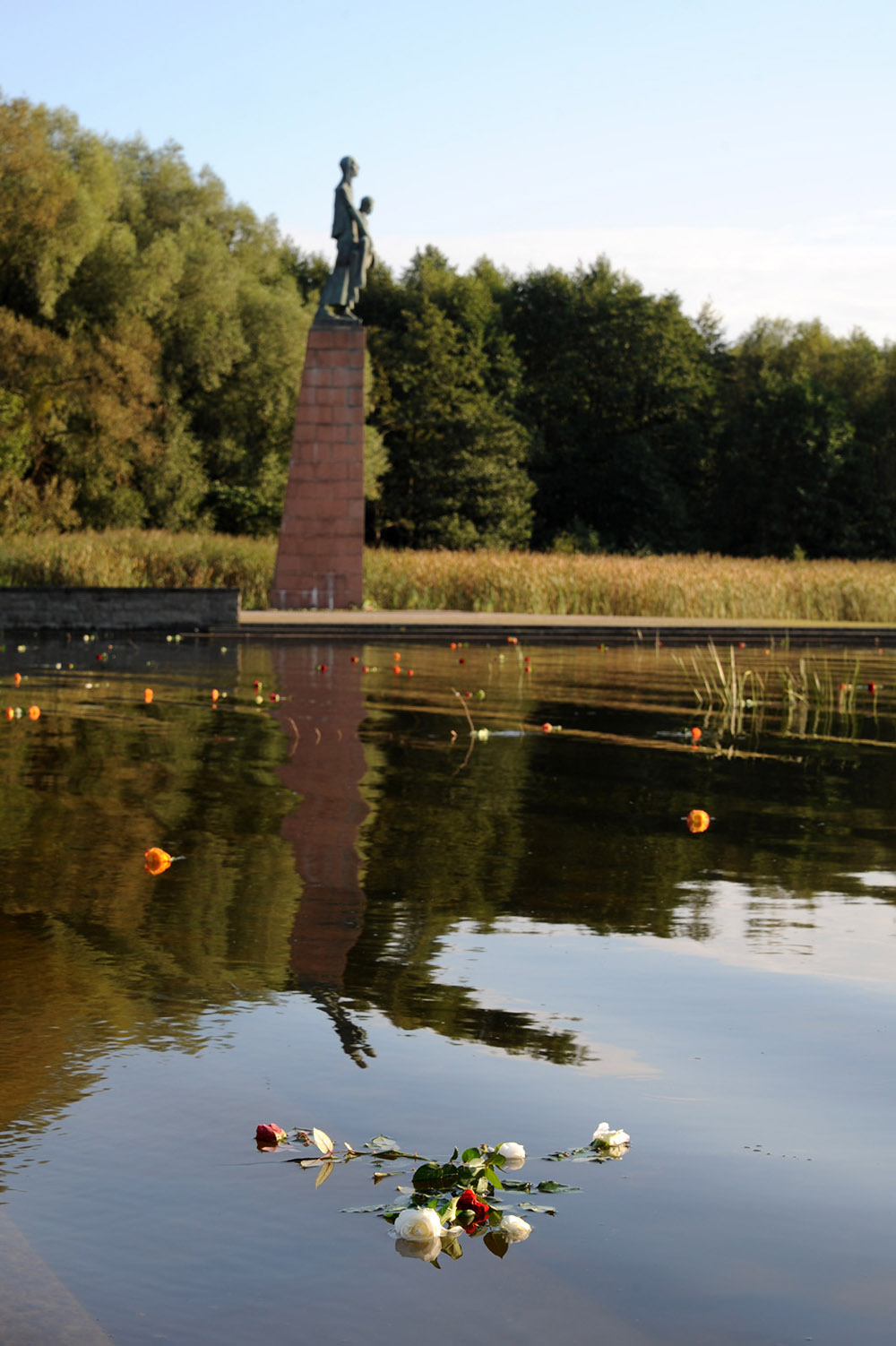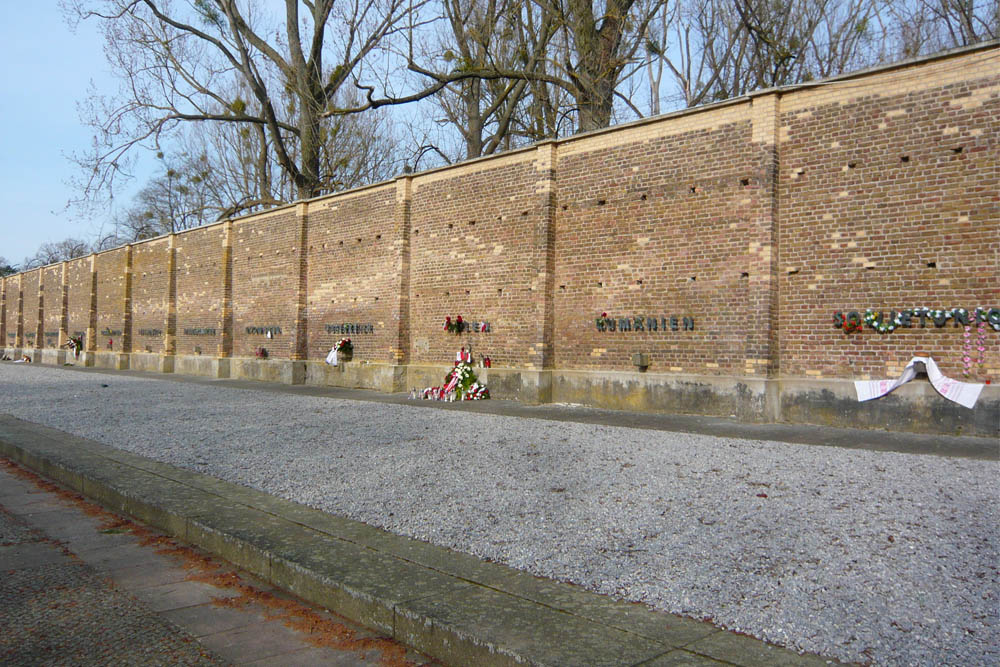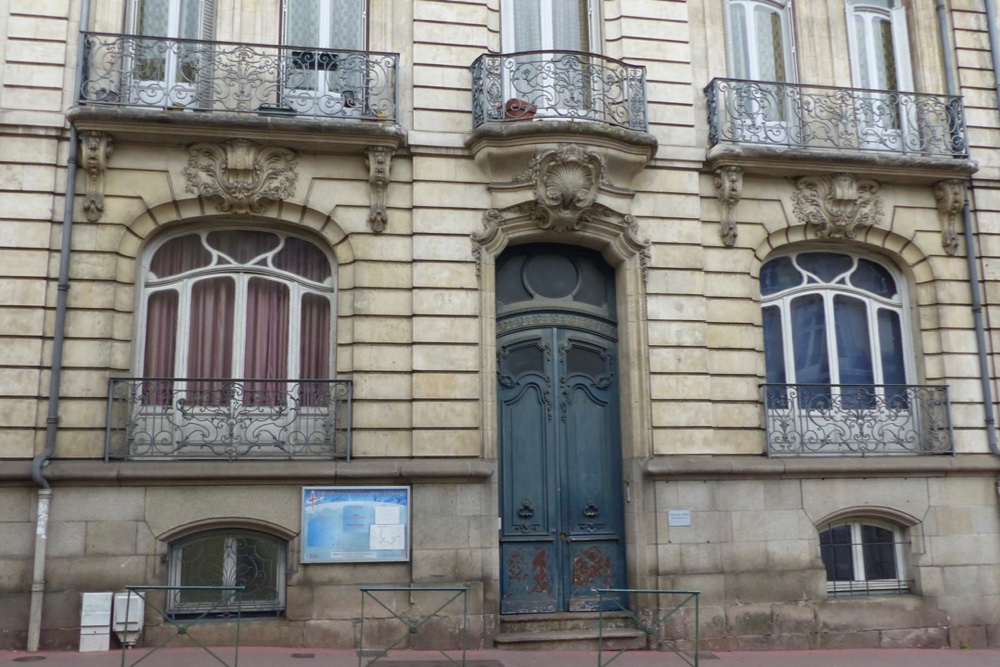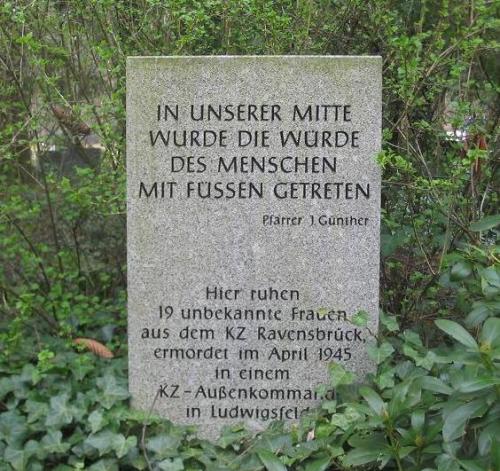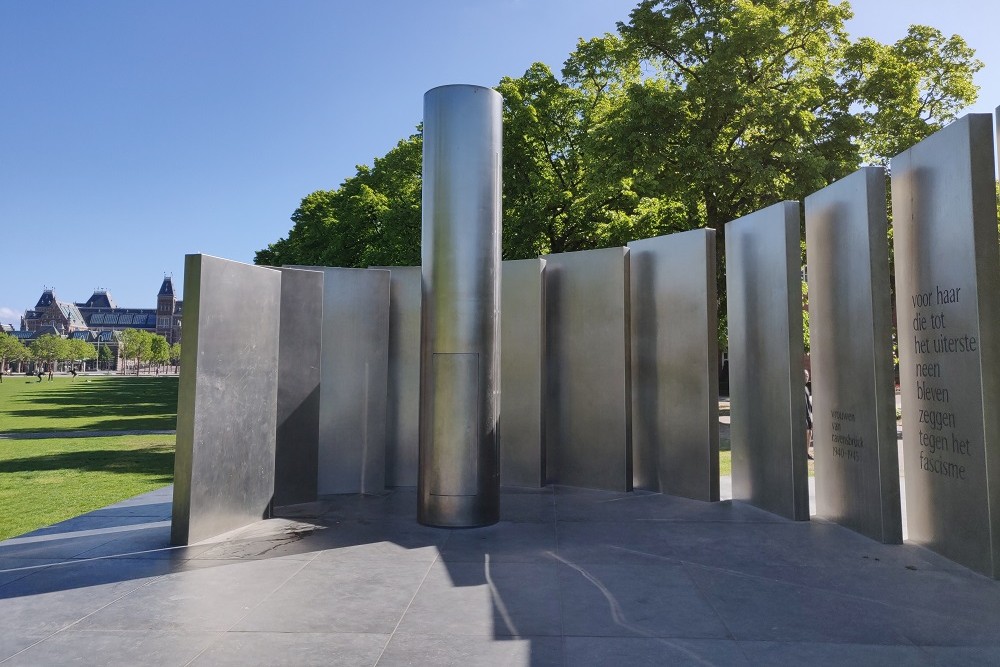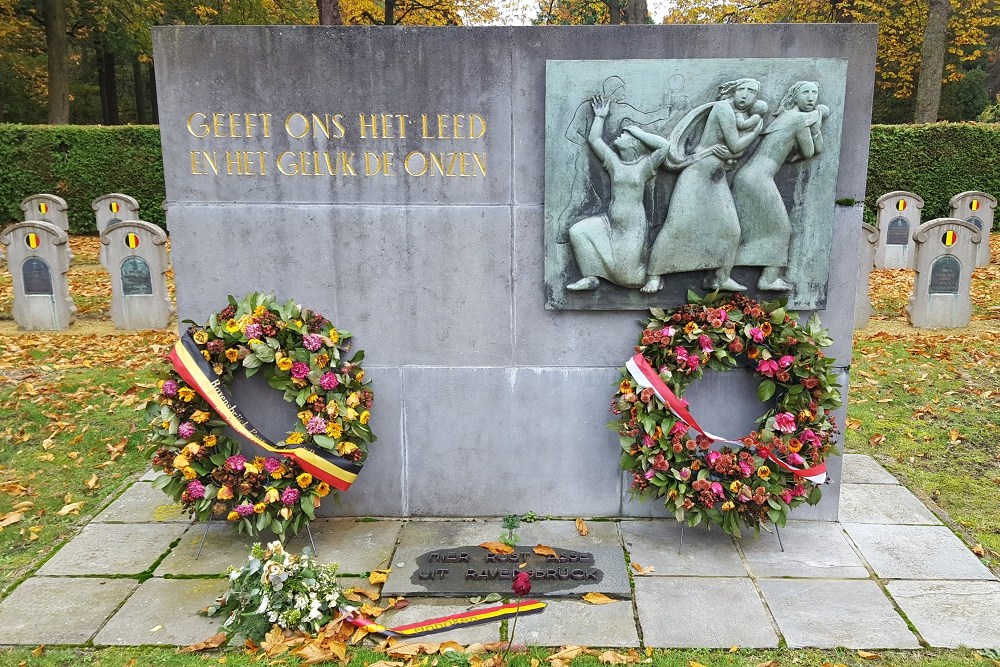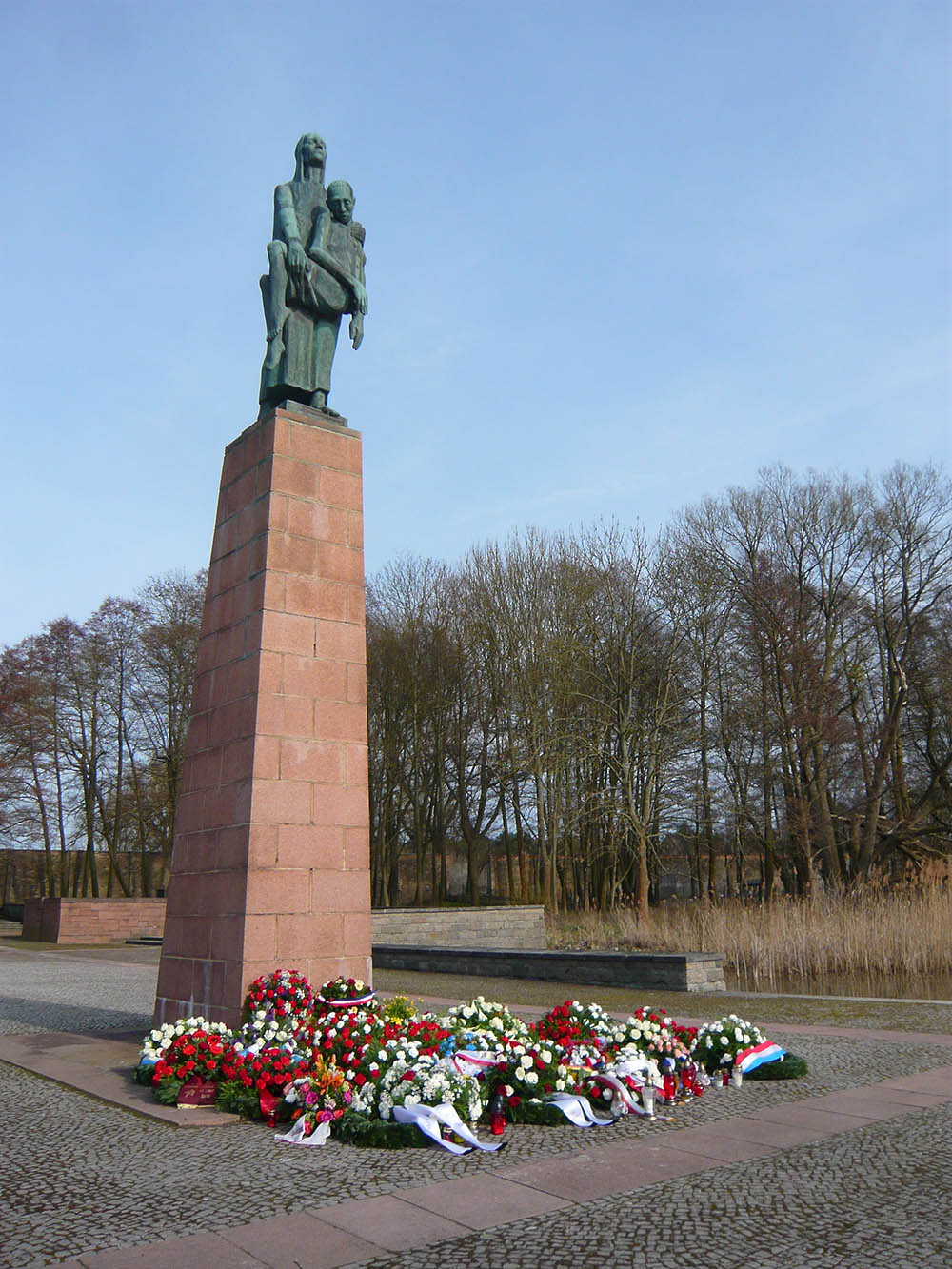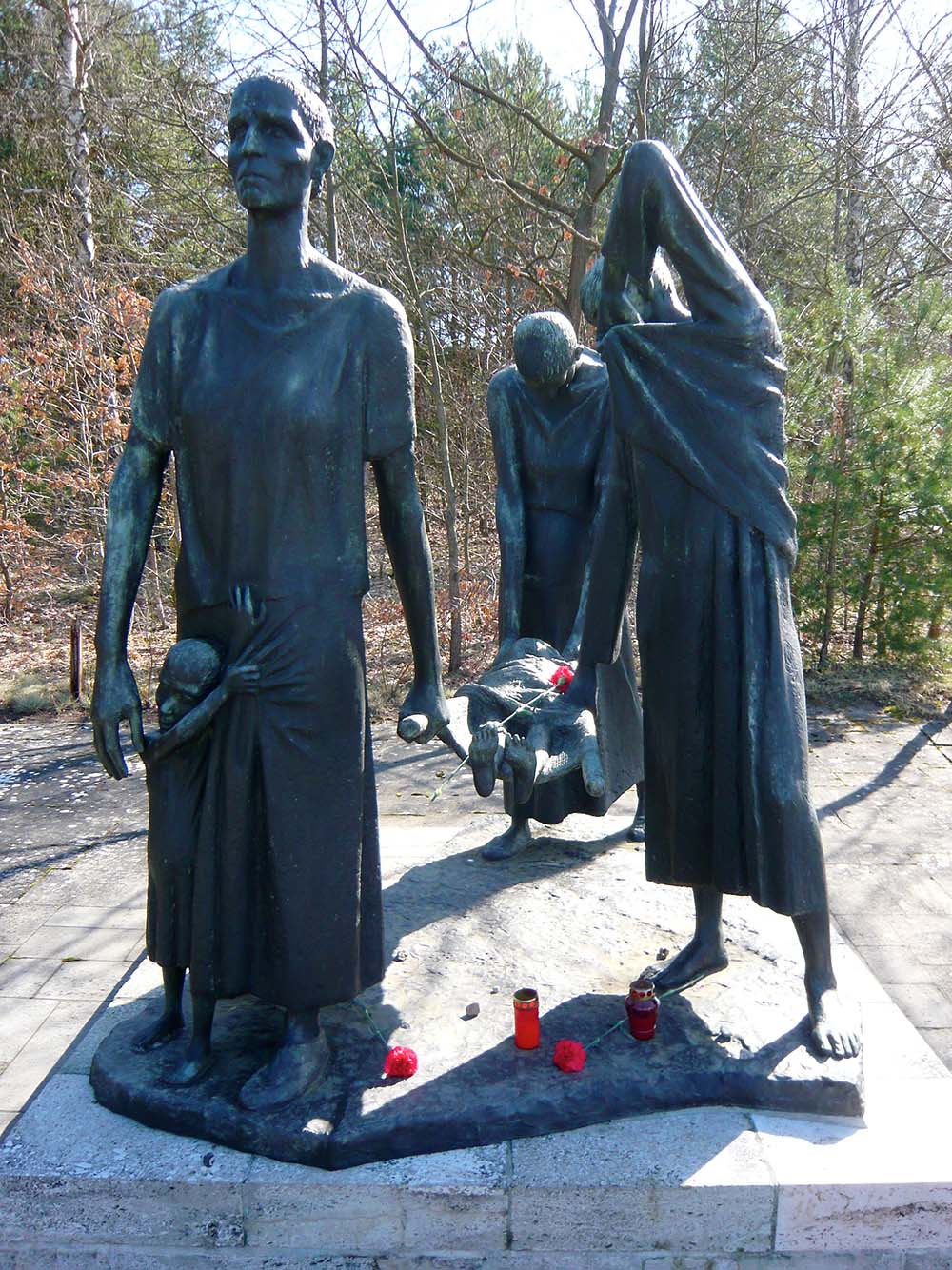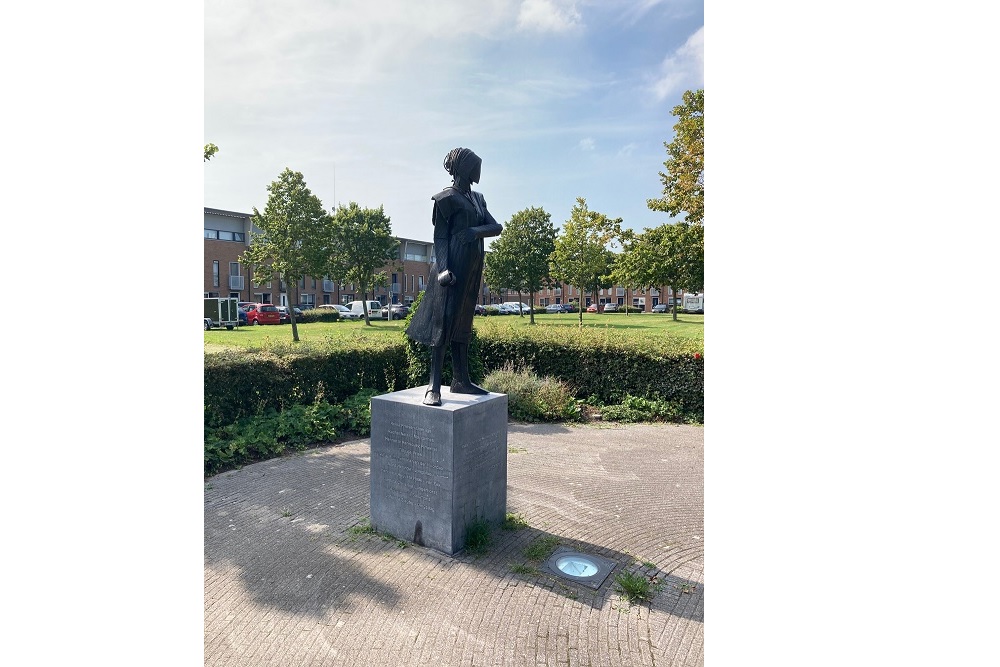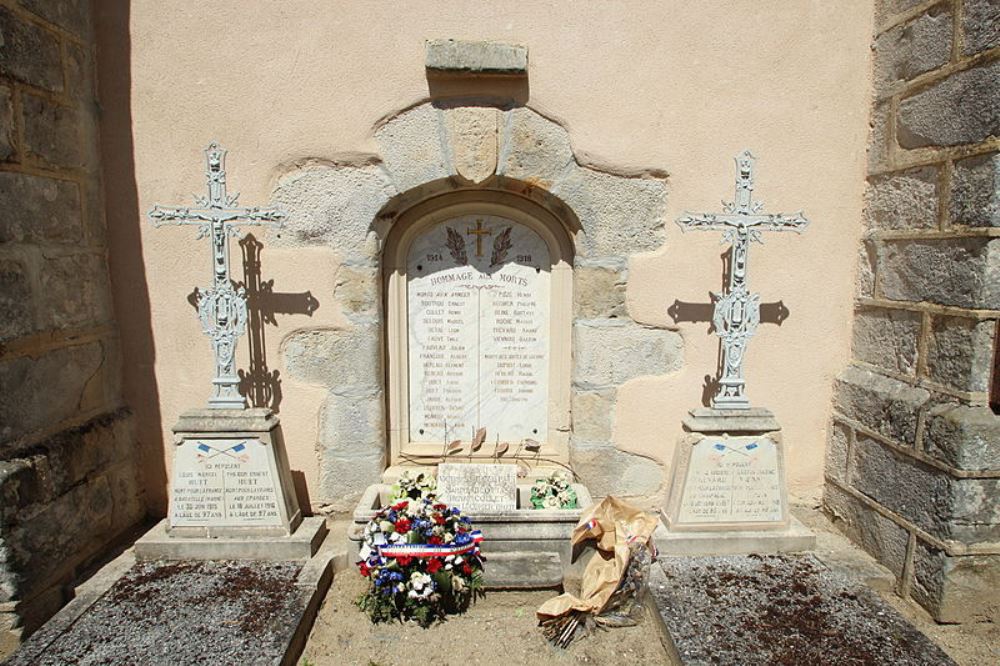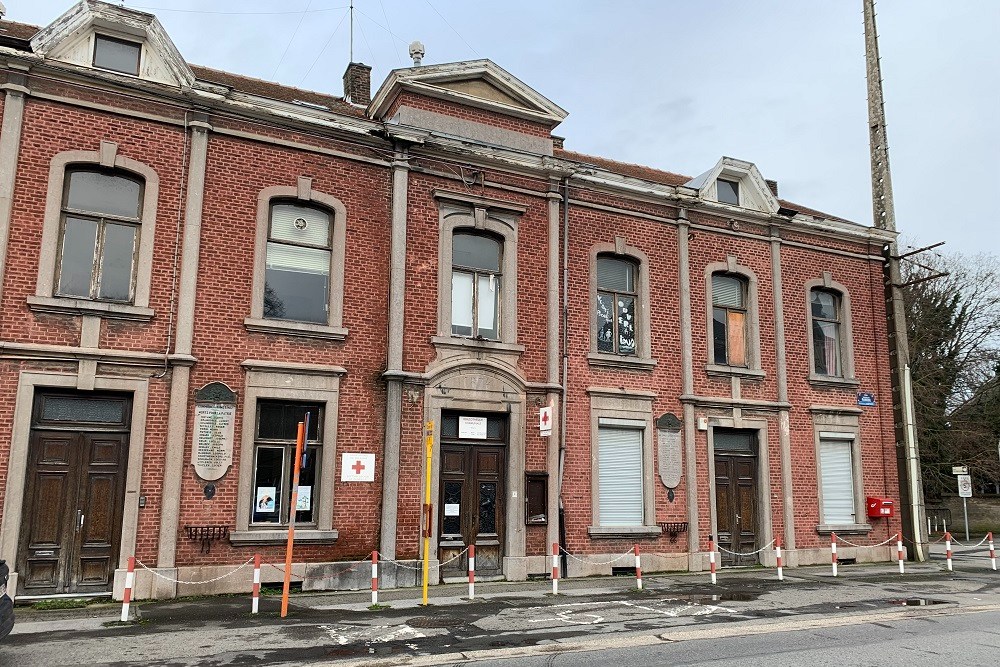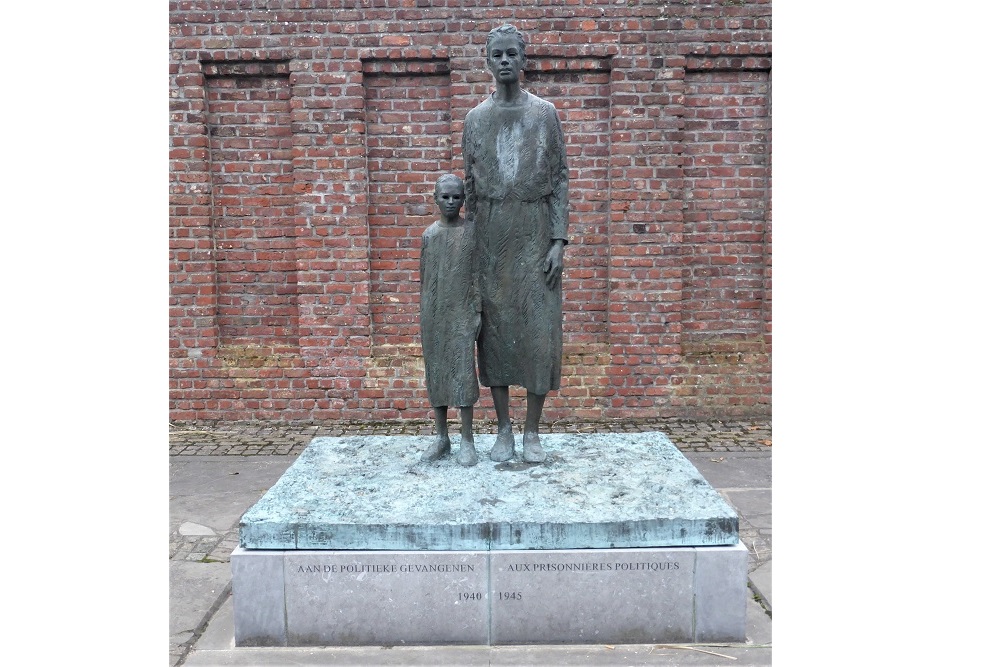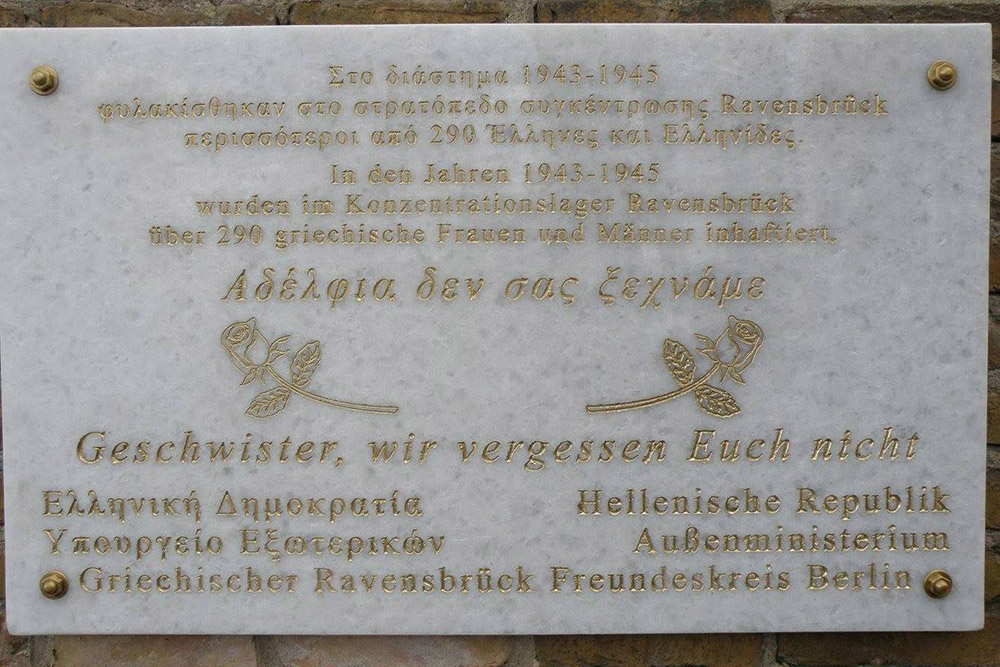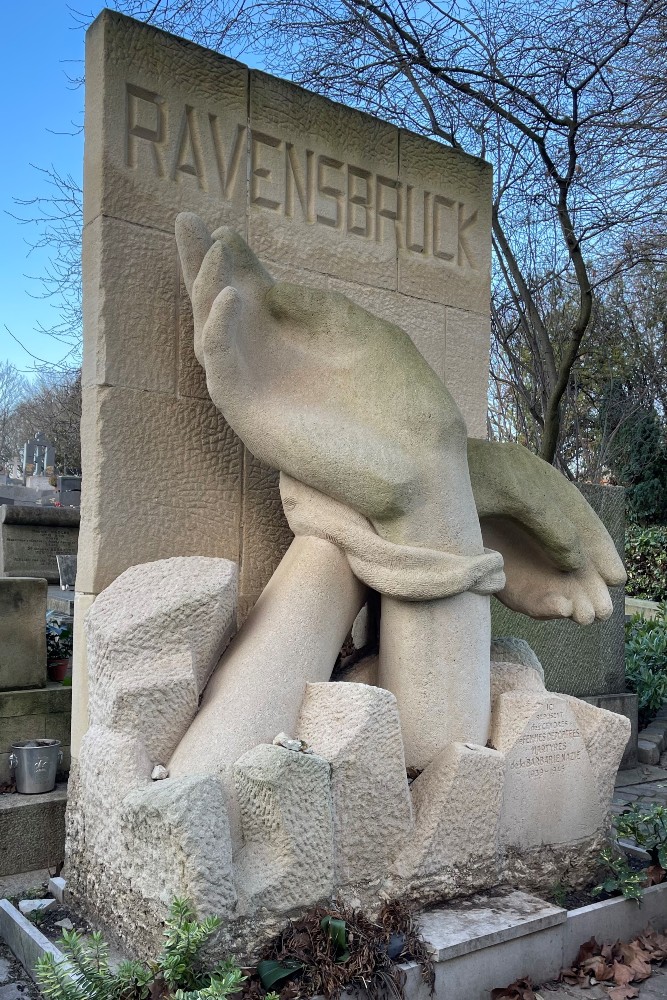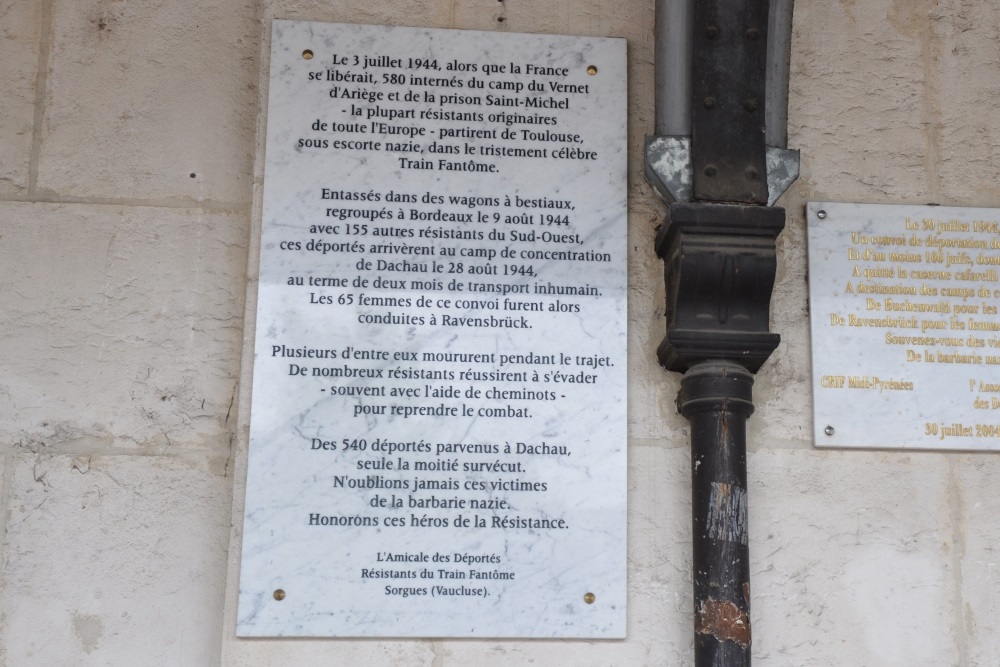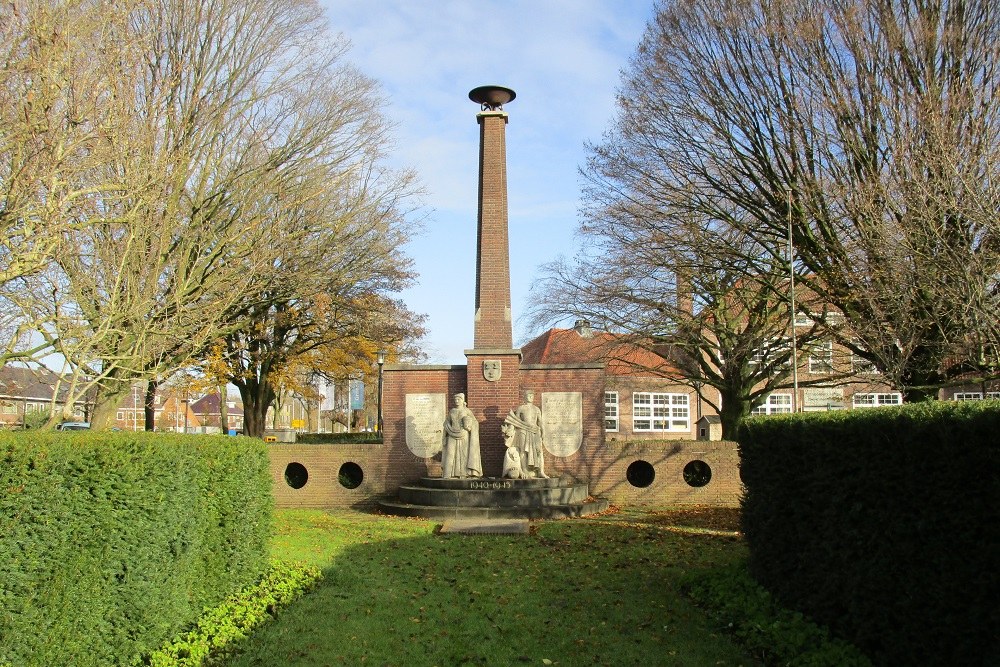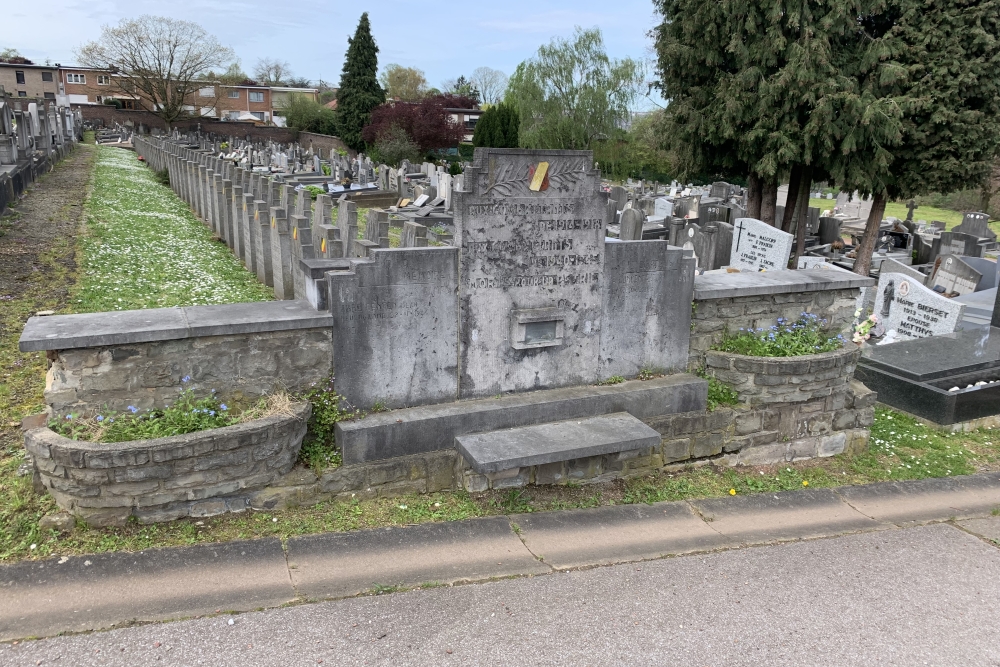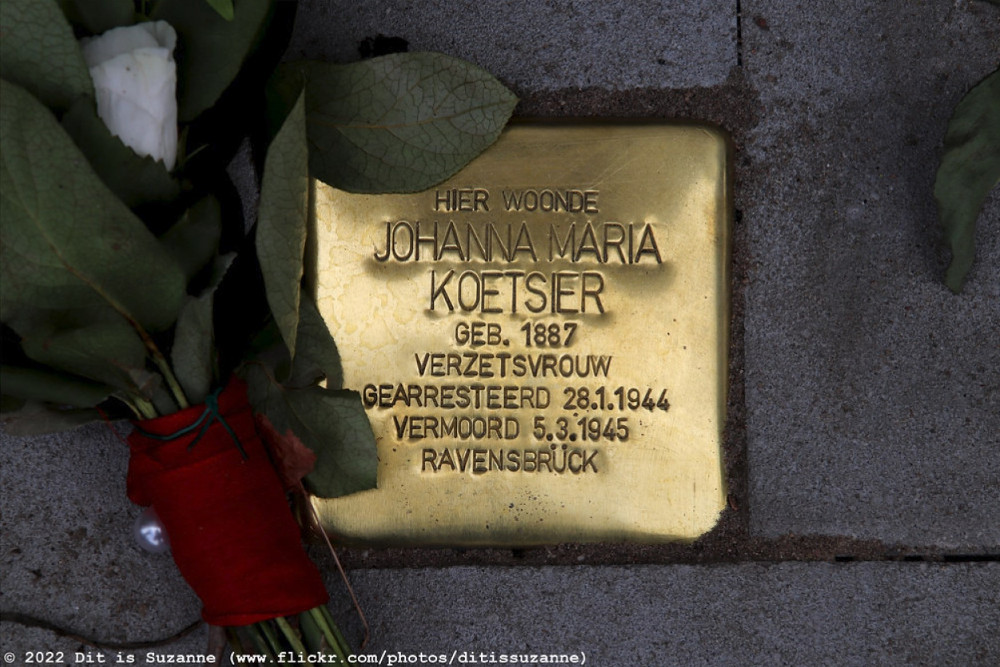Introduction
Women and Ravensbrück are closely connected but Ravensbrück was more than just a concentration camp for women. In the course of the years it was expanded into a complex consisting of the women’s camp, a men’s camp, the Jugendschutzlager Uckermarck and 42 satellite camps. It was the first camp in which men as well as women were imprisoned. From the opening on May 15, 1939 until the liberation on April 30, 1945, some 132,000 women and children, 20,000 men and 1,100 Jugendschutzlager girls from over 40 countries were registered. During that period, some 28,000 people died in the various locations. An estimated 20% of all female prisoners, some 26,000 was Jewish.
Definitielijst
- concentration camp
- Closed camp where people are being held captive that are considered to be anti- social, enemies of the state, criminal or unwanted individuals. These groups mostly do not get a fair trial or are condemned to doing time in a camp.
Pre-war years
In April 1933, the Nazis had converted the former poorhouse in Moringen near Göttingen into a concentration camp for some 330 men. Only a few months later, the men were transferred to other camps and replaced by the first women and girls. Some 1,400 women have been imprisoned here until the camp was closed in March 1938.
After a few years, Moringen proved not to be large enough to accommodate the growing number of female prisoners. Lichtenburg Castle, near Prettin on the Elbe in the vicinity of Leipzig, was marked in December 1937 as the new central concentration camp for women for the entire country. On December 15, 500 prisoners were transferred from Moringen to the larger Lichtenburg Castle. But this camp as well could not keep up with the fast increase of the number of prisoners anymore. Consequently, it was decided to establish a new camp for women which was able to take on the expected massive flow of thousands of women. Camp Lichtenburg was closed in May 1939.
In the fall of 1938, Reichsfürher-SS Heinrich Himmler decided to establish a concentration camp for women in the village of Ravensbrück. The village is located on the Schwedtsee, near Fürstenberg on the Havel, some 56 miles north of Berlin in the mountainous and wooded area in what is now the federal state of Brandenburg. He selected this location because it was rather isolated and yet easy to reach. The Reichsstraße 96, today Bundesstraße 96, ran through it offering a direct connection to Berlin. The railway between Berlin and Rostock ran through Fürstenberg as well. KZ Sachsenhausen lay on this line too, enabling transports of prisoners by train for both camps to be combined. Moreover, the River Havel ran in the vicinity on which heavy building material could be shipped easily. The Schwedtsee to the west, large wooded areas to the north and the river south of Ravensbrück formed a natural separation, hiding the camp from view.
In January 1939 in KZ Sachsenhausen, some 30 miles to the south near Oranienburg, between 350 and 500 inmates were selected for the Aufbaukommando. They were transported by truck to Ravensbrück to build the camp. These men in blue-striped prison garb first erected two barracks for their own housing. Then 14 barracks for the female prisoners were built and 2 for the camp hospital, in addition to the housing for the Kommandantur and the SS. At the entrance to the camp, they also built an elongated wooden structure with shower facilities and a kitchen. A stone wall, 13 high with electrified barbed wire on top surrounded the camp. The inmates from Sachsenhausen performed their tasks in extremely heavy conditions due to the very harsh winter of 1938-39. Numerous private firms were also involved in the construction of the camp. The Ahlgrimm company from Fürstenberg was responsible for building the cell blocks. By the way, after the war this same firm was ordered by the Russian occupier to tear down the barracks.
In April 1939, the largest woman concentration camp in Germany was ready to receive prisoners. It was opened on May 15, 1939 and three days later, on May 18 the first inmates arrived in the camp: 860 German and 7 Austrian women; mainly anti-Nazis (including Communists, Social Democrats and resistance fighters), Jehovah’s witnesses and a small number of Jewish women. They were put to work in the further expansion of the camp and the erection of houses for the SS.
When it was opened in May 1939, it wasn't yet completed in many ways. Because of the almost continuous expansion, it actually remained a building site. From the beginning, German contractors were active in it. A growing number of employees of these firms, such as carpenters and brick layers were called up for military service or deployed elsewhere in Germany. In order to fill these vacancies, other qualified male prisoners were deported from other camps to Ravensbrück and housed in a separate male camp.
The male camp was opened in April 1941. It consisted of five barracks, a small hospital, a workshop for shoemakers and tailors and a coal storage. A high barbed wire fence separated the two camps. The men were of varied nationalities, among them Dutch. A total of some 20,000 male prisoners were registered.
Definitielijst
- resistance
- Resistance against the enemy. Often also with armed resources.
Camp staff
The organization of the camp was made up of six departments:
- Kommandanturand Adjudantur, offices of the commander and his adjutant.
- Politische Abteilung, representing the Gestapo in each camp.
- Schutzhaftlager, Häftlingslager, daily running of the camp.
- Standortsverwaltung, administration.
- Sanitätswesen, medical care.
- Fürsorge, care and training of SS officers and men
Guarding within the camp was the responsibility of SS-Aufseherinnen, or guards. They also supervised the inmates working outside the camp. When the camp was opened, they received dogs, ahead of other camps. According to Himmler, dogs had a much more terrifying effect on women than on men. The dogs were also used by the guards to abuse inmates. According to a nurse working in Ravensbrück, it occurred three to four times a week that women were injured by dog bites. In one case, the leg of the injured woman even had to be amputated from which she subsequently died.
During the first years, there were no watch towers and only the entrance was guarded. The 13 feet high wall with electrified wire on top was considered sufficient to keep the prisoners within the camp. With the opening of the men’s camp, this changed and four watch towers were erected around the camp. An additional guard detail was added which performed guard duties in the entire camp. Compared to other camps housing mainly men, the number of female guards in Ravensbrück was considerably higher than the number of male guards. According to a statement by the last camp commander, Fritz Suhren, from the fall of 1942 until the spring of 1945, some 3,500 female guards and 950 men of the Waffen-SS served in the camp for a shorter or longer period.
Ravensbrück was also in use as a training camp for female SS-guards. What they learned here about maltreatment, torture and murder was later applied by them to inmates in other concentration and extermination camps. One of the most notorious female guards who was trained here, was Irma Grese. One of her nicknames was the ‘angel of death’. After completing her training, Irma was employed in Auschwitz-Birkenau and Bergen-Belsen. After the war, she was sentenced to death at the age of 22 and hanged.
After the closing of KZ Herzogenbusch (Camp Vught) at the end of 1944, a number of Dutch female guards came to Ravensbrück. Four of them could not be identified as certainly being Dutch and as to 12 others, there is a strong assumption they were Dutch based on their names.
Ultimately responsible for the camp was the camp commander, assisted by an adjutant. Until the spring of 1944, the commander would be addressed as Lagerdirektor. It was his duty to implement the rules, set forward by the IKL ( Inspektor der Konzentrationslager) Richard Glücks. The IKL was tasked with the supervision of management and leadership of all camps officially designated as Konzentrationslager by the Nazis. Early 1942, this task was taken over by the SS-Wirtschafts und Verwaltungshauptamt or SS-WVHA headed by Oswald Pohl. Prisoners were widely deployed to the benefit of the war industry which lent the SS-WVHA a great economic responsibility.
Officially, Ravensbrück has had three commanders but in fact there were only two. The first commander was SS-Standartenführer Günther Tamaschke, former commander of Camp Lichtenburg mentioned earlier. However, in the period prior to the relocation from Lichtenburg to Ravensbrück he was involved in a scandal regarding an extramarital relationship and consequently he was sidetracked by his superiors. He was still commander in name but from as early as 1938, his tasks were filled in by his deputy, SS-Sturmbannführer Max Kögel. In January 1940 Kögel was officially appointed commander of Ravensbrück. He held this function until August 1942 when he became commander of Camp Majdanek in Poland, He was succeeded by SS-Hauptsturmführer Fritz Suhren who remained in command of the camp until its liberation at the end of April 1945.
Definitielijst
- Abteilung
- Usually part of a Regiment and consisting of several companies. The smallest unit that could operate independently and maintain itself. In theory an Abteilung comprised 500-1,000 men.
- Auschwitz-Birkenau
- The largest German concentration camp, located in Poland. Liberated on 26 January 1945. An estimated 1,1 million people, mainly Jews, perished here mainly in the gas chambers.
- Waffen-SS
- Name of Military section of the SS.
The prisoners
The Reichssicherheitshauptamt or RSHA, established in September 1939, was responsible for the allocation of prisoners and their deportation to the various concentration camps. This office was headed by SS-Obergruppenführer Reinhard Heydrich. He passed away on June 4, 1942; he succumbed to the injuries he contracted after a raid by the resistance in Prague. The Germans revenged this by for instance by executing all males in the Czech village of Lidice and burning it to the ground. Heydrich was succeeded by SS-Obergruppenführer Ernst Kaltenbrunner who would hold this position until the end of the war.
Initially, Ravensbrück was designed to house 6,000 inmates but this number soon exceeded its maximum capacity. The influx of female inmates can be split into four phases:
- Phase 1: transports from all occupied areas. Almost 16,000 women (until the end of 1942.
- Phase 2: transition to phase 3 in which the transports of phases 1 and 3 were carried out simultaneously and in random order. All told, some 10,000 women mainly from the Soviet Union and France until 1943.
- Phase 3: Deportations. 40% of all female prisoners in the Reichsgebiet, some 70,000 in 1944.
- Phase 4: Evacuations from other camps: 25,000 persons in 1945.
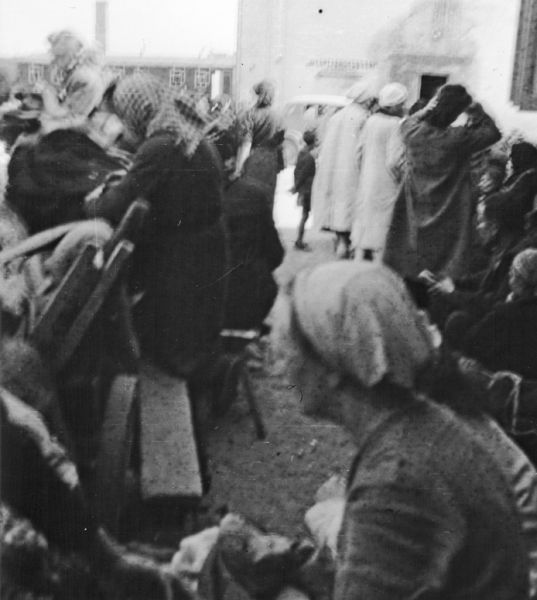
Clandestine picture taken of the arrival of Polish political prisoners in Ravensbrück. Source: HEART
Up to the end of 1944, a total of some 1.000 Dutch women had been deported to Ravensbrück. The first three of them were political prisoners and they arrived on October 12, 1940, five months after the German invasion of the Netherlands. After the evacuation KZ Herzogenbusch (Camp Vught) in September 1944, the largest group of Dutch women, 653 arrived in the camp. Most of those were political prisoners and 26 of them were Jehovah’s witnesses. In 1943 and 1944, a total of 46 women were released, 17 Dutch women perished and another 8 died in the gas chambers.
The first Belgian women arrived on August 21 and a larger group of 308 from Brussels in June 1944. A total of some 1,000 Belgian women had been deported to Ravensbrück out of which 74 died.
Definitielijst
- invasion
- Armed incursion.
- Lidice
- Village in Czechoslovakia which was demolished in 1942 as a retaliation against the assassination of Reinhard Heydrich . The men were brought before a firing squad while the women were sent to concentration camps.
- raid
- Fast military raid in enemy territory
- resistance
- Resistance against the enemy. Often also with armed resources.
- RSHA
- Reichssicherheitshauptamt. The central information and security service of the Third Reich.
- Soviet Union
- Soviet Russia, alternative name for the USSR.
Living conditions
In 1939 and 1940, the prison clothing of the women consisted of a blue-gray striped cotton dress, a shirt, underwear, under gown, long stockings and shoes or slippers with a wooden sole. Prisoners allocated to a certain Kommando and who were in contact with the SS such as the hospital, kitchen or the office of the camp commander, were given a short-sleeved dress to be worn in summer. In the winter of 1941, coats made from the same blue-gray fabric were distributed. This garb, of the males as well, was produced in the tailor shop of the camp. In the beginning, women received clean underwear every three or four weeks. When the number of inmates skyrocketed, women received clean underwear once every two or three months; the so-called clean garb often looked dirtier than the filthy underwear just taken off. In particular the feet of the women suffered heavily as they were not used to walking on stiff slippers with a wooden sole. Large abrasions, skinning and sores caused much pain, in particular in summer when wearing stockings was forbidden.
Inmates were divided into several categories, each with its distinctive, colored triangle showing the nationality as well. In another article, markings for concentration camp inmates will be dealt with in more detail.
At 04:00 in the morning, the women were woken up. Every morning there was hustle and bustle in the 45 minutes between getting up and roll call. Within that period, between 1,500 and 2,000 women had to wash themselves at 16 washbasins. Women queued up in long lines before the toilets.
Like in all other camps, food was provided in minimal quantities. In the morning a mug of a fluid passing for coffee and unsweetened, in the afternoon a pint of watery soup with shreds of turnip, cabbage or dried vegetables floating in it. This soup was ‘enhanced’ with potato peelings from the kitchen. Until 1944, prisoners working were given three of four potatoes, cooked unpeeled. In the evening, all women were given a pint of watery soup once more. In mid-1944, potatoes were no longer on the menu and in the evening, soup was replaced by ‘coffee.’ A prisoner was given 7 ounces of bread a day which should last them the whole day.
In January 1940 Heinrich Himmler inspected the camp and he ordered physical punishment by whipping. A prisoner from the category criminals carried out these punishment and was given additional rations. The camp physician had to be present to check if penalties were actually carried out.
The regime was merciless, penalties were carried out frequently and the women had to work hard. Solitary confinement in the cramped cells of the bunker, the usual penalty for assumed sabotage or resistance often went hand in hand with severe maltreatment. Attacks by guard dogs as well as shooting of prisoners on the execution site occurred regularly.
From July 1942 on, medical experiments were conducted on the inmates as well. Some women were infected with gangrene and others were injected with bacteria causing sores. Experiments with bone transplants and amputations were also conducted on women. Various methods of sterilization were also experimented with. The most notorious medical experiments were conducted on Polish women. They were used as guinea pigs as injuries on their legs were copied similar to those contracted by German soldiers at the front. Most of them died or were murdered later on, those who survived were crippled for life.
The selection and gassing of concentration camp inmates who were sick, old or unable to continue work has become known by the name Aktion 14f13 and was carried out from 1941 to 1944. Some inmates of Ravensbrück, including Jewish political prisoners and those unable to work, were gassed in the euthanasia clinic at Bernheim between Magdeburg and Leipzig. Women were also gassed in especially constructed vans.
Every other two or three weeks, camp commander Suhren, assisted by Obersturmführer Johann Schwarzhuber and Arbeitsführer Hans Pflaum selected the sick and weak women for the so-called Transport nach Mittwerda, in Ravensbrück the SS euphemism for gassing: Camp Mittwerda didn't exist. The women had to lift their skirts up to their hips and then run to and fro in front of them and the SS guards. Women with swollen feet, injuries, scars and those simply too weak or sick to run were selected for a ‘period of recuperation’ in Jugendschutzlager Uckermarck - more about that later. This period of recuperation actually entailed being locked up in a separated barracks without food or medical care until death set in. Most of the selected women however never reached Uckermarck but were gassed in trucks, especially converted to that purpose. The exhaust of the engine was directly connected to the air tight loading bay. Subsequently, the engine was fired up and gassing lasted some 15 to 20 minutes. One of those vans was a captured sanitary truck of the Dutch army. These gas vans were nicknamed ‘green Mina’s, by the inmates.
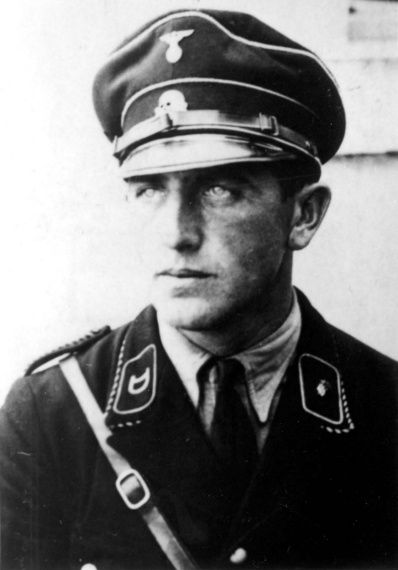
SS-Obersturmführer Johann Schwarzhuber, also responsible for the selection of prisoners to be gassed in Ravensbrück. Source: HEART
Towards the end of the war, conditions had deteriorated drastically. Barracks designed to house 250 women held 1,500 to 2,000 women towards the end of the war, three or four to a bed. Thousands of women had no sleeping space at all and slept on the bare floor without a blanket. Plagues by lice and the risk of diseases caused by contaminated drinking water made life in the barracks even more unbearable. When in the fall of 1944, 500 Hungarian Jewesses arrived in Ravensbrück, they were housed in a tent that had been erected in August 1944. This tent measured about 164 ft in length and contained no beds. The women slept on a thin layer of straw on the sandy floor. They died in their masses.
Definitielijst
- mid
- Military intelligence service.
- resistance
- Resistance against the enemy. Often also with armed resources.
Forced labor
Putting prisoners to work served a dual purpose. On the one hand it was a means of terror, targeted at exhausting and demoralization of inmates. The utterly useless removal of large quantities of sand is just one example. On the other hand it was targeted at exploiting inmates to the benefit of the war industry. This exploitation of prisoners aimed at winning the war resulted in the establishment of a wide range of Außenlager or satellite camps. Ultimately, 42 of those camps belonged to KZ Ravensbrück, spread across the entire German Empire where inmates had to perform forced labor.
Goods produced by women in these camps included airplane parts, weapons, munitions and explosives. Living conditions varied from camp to camp, depending on situations such as the size of the camp, the progress of the war when production had to be raised sometimes and the cruelty of the guards. Inmates were to perform forced labor for a variety of companies such as well-known factories like Siemens, Agfa, Dornier, Heinkel and IG Farben. Frequently, managers of companies in need of laborers came to Ravensbrück in order to select laborers themselves.
The most important private enterprise deploying inmates from Ravensbrück was Siemens. In 1939, this was the largest electronics firm in the world and it still is one of the largest. In the summer of 1942, the company had 20 workshops constructed close to Ravensbrück. Here, female inmates worked as forced laborers producing electronic parts for the V-1 and V-2 rockets.
Ravensbrück was one of the main storage facilities of the Nazis for confiscated clothing and furs. The SS firm Texled, Gesellschaft für Textil und Lederverwertung took over the Bekleidungslager (tailor shop) in Ravensbrück. Some 600 female inmates produced uniforms for SS guards and fur coats for the Waffen-SS and Wehrmacht. The striped prison garb was made here as well. During the fiscal year 1940/1941 these women produced 73,000 shirts, 28,500 pairs of trousers, 25,000 jacks and 20,000 overcoats for inmates.
Women also worked outside the camp in building and road construction. From the end of 1941 on, they were also deployed on the estates and farms in the vicinity of the camp. Those too old or unfit for hard labor had to work on mending clothing for the army or the cleaning of barracks and latrines. The women usually worked 12 hours a day under extreme circumstances. An example of the hard work was pulling an enormous concrete roller by them to pave roads.
In mid-1942 Himmler issued an order stipulating there should be brothels in various concentration and extermination camps. The idea was that a visit to a brothel would raise the productivity of inmates, preventing homosexual behavior. A first group of 18 to 24 women was transferred from Ravensbrück to other camps where a brothel had been established, very neutrally called Der Sonderbau (special building). In Auschwitz for instance, a prisoners brothel was established in Block 24. The women were all ‘volunteers’. They were promised to have to do this work for months and then be released. This promise was just hot air, the women were never released. An estimated 220 women from Ravensbrück had been forced into prostitution.
Definitielijst
- mid
- Military intelligence service.
- Waffen-SS
- Name of Military section of the SS.
- Wehrmacht
- German armed military forces, divided in ground forces, air force and navy.
The children and Jugendschutzlager Uckermarck
In Ravensbrück, hundreds of little children were kept prisoner. Cruelty and sadism towards them knew no limits and the fate of these little victims was horrendous. Children and babies were already marked for death before they were born. Newborns were separated from their mother immediately and subsequently drowned or left to die in a locked room. This was mostly done before the eyes of their mothers. There are numerous eyewitness accounts about children being thrown into the ovens alive, buried alive, poisoned, strangled or drowned.
Numerous children were also used for ‘medical’ experiments. Hundreds of little girls, sometimes only eight years old, were made infertile by exposing their genitalia to X rays. In the first months of Ravensbrück, children were killed right away. SS physician Rolf Rosenthal and his extramarital friend Gerda Quirnheim, a German inmate woking as a nurse, often aborted pregnant women in a bestial fashion. After the war, Rosenthal as well as Quirnheim were sentenced to death by hanging during the Ravensbrück trials. When newborn babies sometimes were allowed to live, they usually died soon from lack of food and the dismal hygienic situation. Only the strongest of the little ones could survive. These children had to work day and night, alongside their mothers in the workshops and assist in the heaviest labor. Only a few of these survived the war.
Jugendschutzlager Uckermarck, in particular established for growing girls, deserves special attention. It was located about a mile from the base camp Ravensbrück. Despite the distance, it was part of the complex. Uckermarck was constructed by prisoners from the male camp of Ravensbrück. In the spring of 1943, six barracks were completed but even during construction, the first girls were deported to the camp in June 1942. Each barrack was surrounded by barbed wire. The sick bay and the penal cells in the Bunker were also used for the girls of Uckermarck.
As early as at the beginning of 1942, it was decided to establish a new camp in the vicinity of Ravensbrück where female minors could be imprisoned. These girls were to be considered, according to Nazi standards, as ‘outsiders’ and asocial. In the opinion of the Nazis, society had to be protected against them. They had to be ‘reeducated’ to make their contribution to society. The majority of these girls were locked up in this camp straight from juvenile institutions as they would be ‘educatable’. Many of them were labeled ‘sexually neglected’ which means they had a history of prostitution or having had too many sexual contacts according to the prevalent morale. Girls owed their stay in Uckermarck also to contacts with Jews or with non-German forced laborers or having resisted the Nazi regime. Even belonging to a family being active in the resistance could be ample reason for imprisonment in Uckermarck.
The girls were supervised by ‘educators’ and a leader of the camp, all belonging to the SS. Within the camp there was a general ban on speech during 24 hours and violation of this rule led to measures such as extended roll calls. The girls had to perform hard physical labor in for instance the nearby Siemens workshops. A total of between 1,000 and 1,200 girls have been interned in the camp, most of them between 16 and 21.
In January 1945, the largest part of the camp was cleared and most of the girls were sent to the female camp Ravensbrück. From that moment on, the evacuated part served as a death camp. Women over the age of 52, the sick and the weak were transferred to this camp. They were killed by lethal injections and were administered poison in the form of a white powder called Luminal. Others died from the abysmal living conditions. Between June and April 1945, some 5,000 women died here. Their remains were taken to Ravensbrück and cremated, the ashes were dumped in nearby Schwedtsee.
Definitielijst
- Jews
- Middle Eastern people with own religion that lived in Palestine. They distinguished themselves by their strong monotheism and the strict observance of the Law and tradition. During World War 2 the Jewish people were ruthlessly persecuted and annihilated by the German Nazis. . An estimated 6,000,000 Jews were exterminated.
- Nazi
- Abbreviation of a national socialist.
- resistance
- Resistance against the enemy. Often also with armed resources.
The end
In the last months of the war, as the Red Army was approaching fast, the SS decided to kill as many inmates as possible to prevent accounts of what had happened to become known. In February 1945, a provisionary gas chamber was built in a barracks near the crematory which had been in use as a storage before. In these chamber, between 150 and 180 people could be gassed simultaneously using the poison gas Zyklon B. From February until April 1945, between 2,300 and 2,400 people were killed here. The majority consisted of Hungarian Jews, followed in numbers first by Polish and then by Russian Jews. This number included 130 babies and pregnant women.
Count Folke Bernadotte, vice-president of the Swedish Red Cross had persuaded Himmler in early March 1945 to allow the International Red Cross to take a number of prisoners out of Ravensbrück and other camps. On May 5, the Red Cross was allowed to save Scandinavian women first, followed by women from France, Poland and the Benelux countries.
Following an intervention by the Jewish World Congress, Bernadotte asked to be permitted to transfer Jewish prisoners to Sweden as well. Himmler agreed and between April 22 and 28, 1945, some 7,500 women, including some 1,000 Jewish, were rescued from Ravensbrück. Via Copenhagen, they went to Malmö in neutral Sweden by ferry. After having received clothing, food and medical care, they went to various places to recuperate. Afterwards, the non-Jewish women returned to their home country. The Jewish women attempted to contact next-of-kin in their homeland but most of them emigrated to Israel and the United States; some settled down in Sweden.
Pursuant to an evacuation order issued by Himmler, camp commander Suhren sent about 24,500 inmates on a death march to Mecklenburg. Between April 24 and 28, these inmates left in various groups. As a result of exhaustion, hundreds of women died during these marches.
On April 29, the last members of the SS left Ravensbrück after first having cut off the water and electricity facilities. Some 2,000 sick prisoners were left behind in the camp. On April 30, the first Soviet troops set foot in the camp, scouts of the 49th Russin Army. During the following days, the Red Army took some 800 people from the vicinity of Ravensbrück to the camp and put them to work on the clearing, burying the dead and caring for the sick.
The trials against those charged with war crimes in Ravensbrück were held in Hamburg, in the British zone of occupation. In seven separate trials, 38 people were indicted, among them 21 women. The first trial started on December 1946, the last on July 21, 1948. The verdicts read: four acquittals, 15 imprisonments between one year and life and 19 death sentences. All sentences were executed except that of Gerda Ganzer who had worked as a nurse. Her death sentence was downgraded to life imprisonment and she was released ahead of time in 1961. Many defendants had been doctors and nurses who had participated in medical experiments.
Definitielijst
- International Red Cross
- Name of a complex of co-operating humanitarian organisations which primarily focusses on providing assistance to the sick and wounded military during wartime, to prisoner of war and to civilians during wartime and other conflicts. The role of the Red Cross during World War 2 is somewhat controversial.
- Jews
- Middle Eastern people with own religion that lived in Palestine. They distinguished themselves by their strong monotheism and the strict observance of the Law and tradition. During World War 2 the Jewish people were ruthlessly persecuted and annihilated by the German Nazis. . An estimated 6,000,000 Jews were exterminated.
- Red Army
- Army of the Soviet Union.
- war crimes
- Crimes committed in wartime. Often concerning crimes committed by soldiers against civilians.
Ravensbrück today
The camp was inaccessible to visitors from the west until the wall was torn down in November 1989. After the war, the original barracks were demolished by the Soviets. New barracks were constructed in which Soviet troops were billeted until 1993. These soldiers were there as part of the Soviet anti-rocket program.
The Mahn- und Gedenkstätte Ravensbrück was opened on September 12, 1959 as one of the three national memorial sites of the GDR. In their design, the architects included part of the concentration camp buildings outside the camp wall. These were the crematory, the former prison of the camp and part of the 13 feet high wall. In 1959, a graveyard was laid out before the western wall of the camp in which the remains of the demised prisoners from various mass graves were reburied.
After the German unification, the former camp was renovated and prepared for the 50th anniversary of the liberation in April 1995. Although the lake looks idyllic, the ashes of people from the three crematories lie on the bottom.
In the Netherlands, a monument commemorating the women of Ravensbrück, is located on the Museum square in Amsterdam. A well-known Dutch woman who has been imprisoned in Ravensbrück, was Helena Kuipers-Rietberg, cofounder of the LO, the national organization for help to hiders. Other well-known prisoners are evangelist Corrie ten Boom, her sister Betsie (she died in Ravensbrück in December 1944) and a victim of the Englandspiel, Beatrix Terwindt. Drawer and resistance fighter Aat Breur-Hibma has made gripping drawings in the camp, published by her daughter Dunya Breur in ‘Een verborgen herinnering’ (A hidden reminder) in 1983.
Definitielijst
- Englandspiel
- “England game”. The game, ironic as it may sound, of espionage and counter espionage between the British Special Operations Executive (SOE) and the Nazis. This “game” resulted in the death of approximately 54 allied spies.
- resistance
- Resistance against the enemy. Often also with armed resources.
- rocket
- A projectile propelled by a rearward facing series of explosions.
Information
- Article by:
- Michèl Admiraal
- Translated by:
- Arnold Palthe
- Published on:
- 18-09-2024
- Last edit on:
- 24-09-2024
- Feedback?
- Send it!
